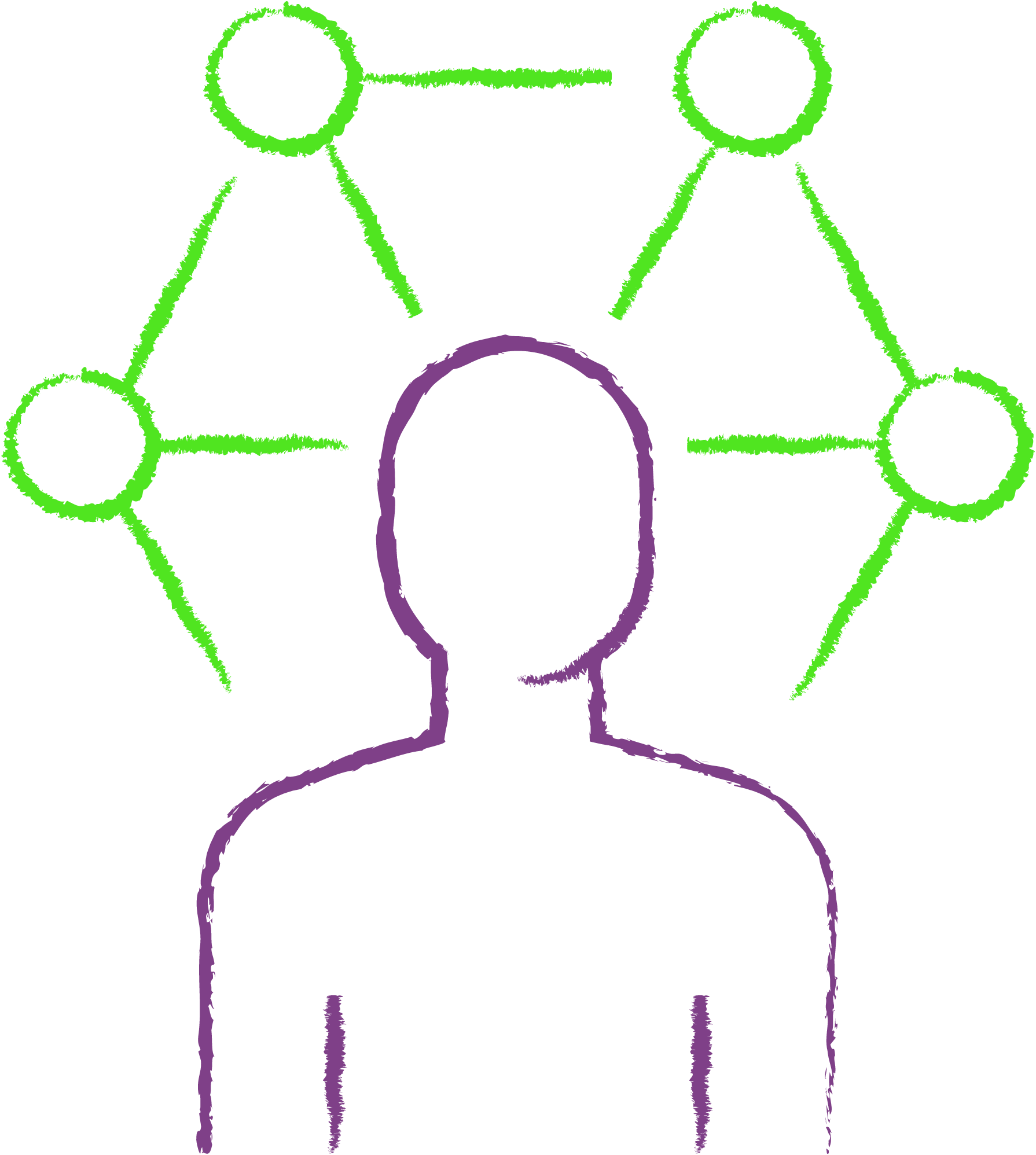DIGITAL OPERATING
MODEL DESIGN AND
IMPLEMENTATION
DIGITAL OPERATING
MODEL DESIGN AND
IMPLEMENTATION

service overview
We design user-focused, multi-channel customer service systems for the
digital era. Our comprehensive approach includes developing effective
target operating models, crafting business change strategies, and
supporting clients through implementation.
Our services help organisations build a comprehensive digital strategy
that integrates customer interactions, products, services, business
processes, information technology, organisational structures, and
staffing. We design optimal customer experiences, define required IT
systems, and outline organisational changes needed to operate efficiently
in a digital environment. Our work identifies the programs and projects
required for implementation. Crucially, we also provide strategies and
support for deploying new models, ensuring adoption, managing
business change, and enabling continuous improvement.
In summary, we partner with organisations to craft practical digital
blueprints, detailing required transformations across operations,
technology, and staff. Our services enable successful deployment and
ongoing optimisation.
our service includes
Design driven by insights gleaned from best practice, user research, customer segmentation analysis, and data analytics:
We combine user research and user experience techniques with analytics to gain insight for designing and testing a model that demonstrably and traceably links what customers want with how the organisation will deliver it.
Conduct a capability review, maturity assessment, benchmarking, and gap analysis to assess the current state:
We evaluate the IT Enterprise organisation’s current capabilities to operate according to the agreed-upon digital strategy, as well as identify gaps between the current (‘as is’) and desired (‘to-be’) operating models.
Service delivery designed to connect seamlessly across all channels and with third-party partners:
We work closely with partners, suppliers, and intermediaries to determine how to deliver services consistently and seamlessly across all channels, while also advising on the necessary skills, processes, and tools required for support.
High-level and detailed organisation design consulting, including advising on outsourcing strategies:
The scope of work encompasses the design process from developing high-level principles through detailed specifications for delivering the digital strategy. This includes formulating options, evaluating alternatives, identifying capability gaps with quantified impacts, and assessing sourcing approaches. Operating model design
will integrate internal and external service delivery, including procurement, implementation, transition planning, and quality management. Key challenges include enhancing supplier relationships and investments to improve services, as well as developing commercial models and usage-based pricing aligned to self-service delivery
Revise policies, procedures, and processes to integrate
and streamline them:
The redevelopment establishes clear processes, aligns with the operating model, and enables digital service delivery. It also considers necessary management information, reporting, and KPIs
Design of enabling technology: CRM; self-service portal; automation; mobile working:
The model’s design should be based on the best and latest enabling technology while also planning for IT capabilities across all channels, recognising how the current IT architecture will support the model.
Designing models that integrate assisted digital capabilities into broader service delivery frameworks:
Rather than just adding digital inclusion as an afterthought, organisations should integrate its principles into their model in a comprehensive way. This is especially important as organisations increase their collaboration with the private and third sector.
Develop and communicate a clear plan for implementing business changes to leaders, staff, and stakeholders:
The assessment will produce a business change strategy and plan to establish and embed new ways of working. This assessment will analyse the cultural and behavioural changes needed for the new digital service delivery model. It will shape business change interventions to gain visible senior sponsorship, mitigate risks from the
changes, and manage business impact.
An integrated program plan that aligns portfolio management and project delivery through a roadmap:
The assessment will produce a business change strategy and plan to establish and embed new ways of working. This assessment will analyse the cultural and behavioural changes needed for the new digital service delivery model. It will shape business change interventions to gain visible senior sponsorship, mitigate risks from the
changes, and manage business impact.
detailed service description
Organisations often face growing pressure to modernise their service delivery models to meet the demands of the digital age. This pressure stems from new digital technologies, shifting behaviours and needs of citizens, and rising expectations shaped by experiences with private sector digital services.
While public sector organisations often operate at immense scale and complexity, adjusting their delivery models frequently impacts the broader operating model, resulting in major transformation and implementation challenges.
Implementing a digital strategy often requires creating services that differ fundamentally from current offerings, rather than merely redesigning existing operations. This may prompt questions about the overall enterprise operating model, calling for a first-principles approach to service design.
business context
When designing and implementing new models, organisations must confront various challenges. They typically need to consider:
- To fully understand customer and end-user needs, model design should incorporate user-centric approaches that provide insights into the customer perspective.
- To encourage user adoption, focus on designing digital solutions that are easy and intuitive for the intended audience to use. Rather than optimising certain channels, strive for inclusion by considering accessibility, skills training, and outreach to digitally under-served groups. Embed these strategies into implementation plans from the start.
- To fully leverage new digital technologies, conduct a thorough business analysis to identify the optimal skills and methods for gaining deep insight into current operations.
- Rather than designing a static “to-be” operating model that risks irrelevance or getting bogged down in enormous, lengthy transformation” programs, organisations should pursue an agile approach to operating model design and delivery. This involves iterative design with early testing, quick implementation of changes, and continuous improvement through feedback loops. The goal is to rapidly evolve the operating model to meet emerging needs.
- To enable truly integrated delivery, organisations should consider how to strategically engage third parties, suppliers, and intermediaries that could play a role in the service ecosystem.
- To foster a digitally confident and capable workforce, organisations must address the cultural changes needed to build digital skills and mindsets.
- To drive change, it is often necessary to employ multiple strategies simultaneously since relying on just one approach rarely meets the diverse needs and expectations of all staff and stakeholders involved.
- Businesses must manage transition risks to ensure uninterrupted service delivery
our approach
Digital transformation and implementation is a complex topic, with Harrison offering many specialised services. We will collaborate with you
to refine your needs and identify the Harrison offerings that best suit them. Our approach has three core features:
The design and development of operating models is being transformed by digital technology. Specifically, Agile development processes are challenging the concept of fixed target designs. In Agile environments, target models are rarely fully realised because “learning by doing” frequently shapes the end goal, and because business landscapes evolve faster than predefined endpoints can be reached.
At Harrison, we believe the following:
- Rather than being mutually exclusive, Agile and waterfall methodologies can complement each other when used together appropriately – There is a need for both.
- Even when organisations implement Agile in good faith, they still need an operating model design to support effective execution. This is especially true as stakeholders like Finance and HR will expect details on business cases, program plans, and impacts on staffing and grading structures.
- The key is to establish effective collaboration between Agile and TOM teams, so both can provide feedback to guide the other. Typically, we differentiate between an initial ‘visionary TOM’ that broadly outlines the direction, and a detailed ‘TOM blueprint’ later on. We believe starting with a rough sketch of the TOM can be helpful to set the general path early on. After that, customer insight, user testing, and feedback should directly inform Agile sprints, which in turn should feed into refining the TOM. However, before full-scale organisational implementation, a robust TOM is still required to mitigate implementation risks.
approach stages
Digital disruption is creating unprecedented challenges and
changes for businesses, many of which have no known solutions.
To effectively navigate this rapid transformation, organisations
must build leadership skills across all levels, not just at the
top. The first steps are removing structural barriers, aligning
around a future vision, and empowering people regardless of
their position in the hierarchy.
With digital forcing the pace of change, leadership at scale is
critical.
There is no singular “correct approach” for implementing
business change in a digital context, which requires flexibility
and responsiveness. A successful change approach
depends on many factors like leadership strength, vision
maturity, industry dynamics, and product offering. However, digital transformation efforts consistently require (a) aligning
initiatives to a clear digital strategy and (b) visible senior
leadership commitment to achieving planned outcomes.
The most effective way to implement digital transformation is through a digital platform. The most persuasive voices are those who have already embraced and can speak knowledgably about new, digital ways of working. It is vital that the business change approach reflects the intended future ways of working, highlighting the benefits available to early adopters.
critical success factors
We have substantial experience in this field and can furnish case studies and references upon request. Our experience indicates several key
factors for success, such as:
- Rather than jumping straight into an operating model, clients should use their digital strategy as the foundation. Form should follow function – it’s crucial to decide on the goals before considering how to achieve them.
- It is crucial that the model directly connects to customers’ needs by involving them in the design and validation process.
- To incorporate digital expertise in the design process, we aim to have team members with experience in digital design from both the public and private sectors, ideally with backgrounds in the UK and internationally. This diversity of digital perspectives will help shape our thinking and bring fresh ideas and best practices to the project.
- The transition to digital can present significant challenges for staff and requires careful engagement with external bodies. Navigating these relationships dexterously and judiciously is crucial for major transformation programs to optimise stakeholder involvement and engagement strategies.
- Rather than seeing current operations as a constraint, we view them as providing context. The trick is knowing when not to discard valuable aspects while still instituting enough change to signal to staff, stakeholders, and customers that the future will look very different.
- It is important to determine how to prevent changes from getting absorbed into massive “transformation” programs with lengthy implementation timelines, as this can obstruct early testing and iterative refinement of the design over time.
- The program plan should ensure effective collaboration with other in-flight initiatives, working within existing governance models as suitable.
why harrison
IT consulting that isn’t scripted, templated or one we did earlier We’ve regularly experienced a hit and run culture of IT service providers that create an amazing sales experience.
Yet still, the delivery has fallen short, leaving the customer to pick up the pieces, often at a considerable cost.
At Harrison, our IT consulting is all tailored to the individual customer needs and desired outcomes. We utilise all of the best practice frameworks (ITIL, COBIT, SIAM, Prince2, Agile, etc.) across the full enterprise combining the best elements to ensure your goals and objectives are met.
Our interactions with clients embody a friendly and pragmatic ethos, centred around people. We take a holistic 360-degree approach to our work, deliberately avoiding silo thinking.
Choose Harrison for IT consulting with bespoke solutions, meticulously crafted to align with your unique business
objectives.
